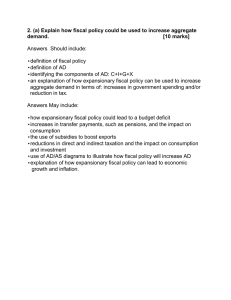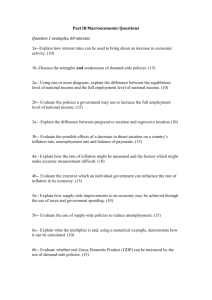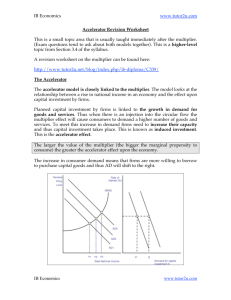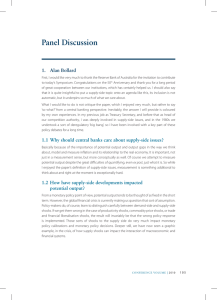Ch 9 assessment markscheme 13 hs
advertisement
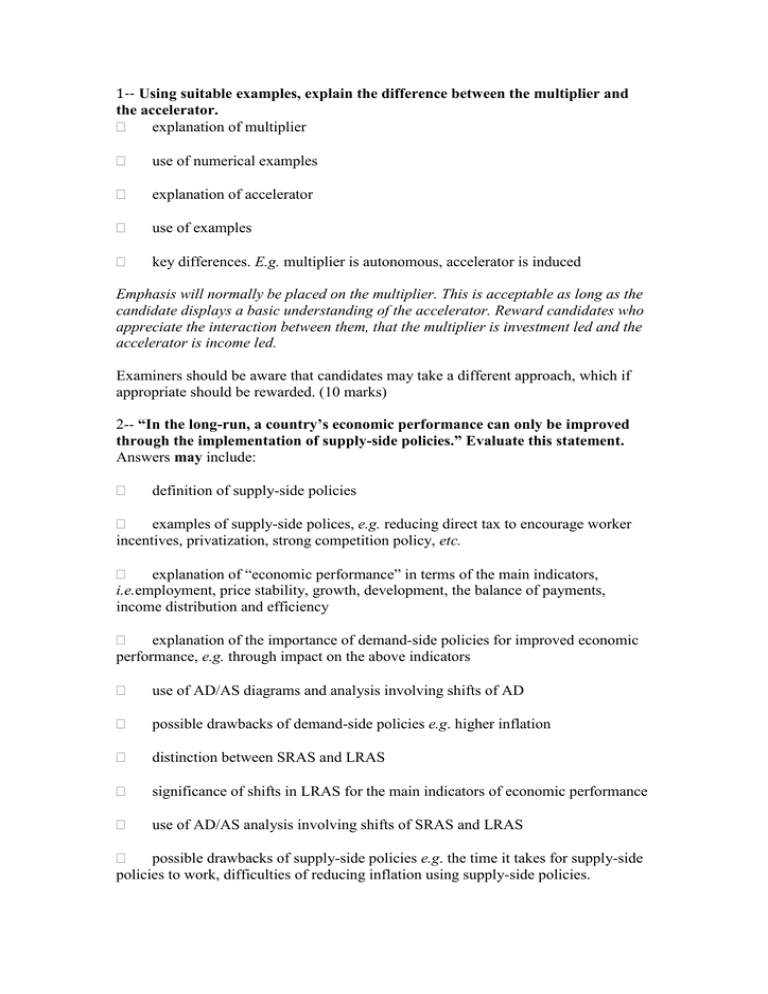
1-- Using suitable examples, explain the difference between the multiplier and the accelerator. explanation of multiplier use of numerical examples explanation of accelerator use of examples key differences. E.g. multiplier is autonomous, accelerator is induced Emphasis will normally be placed on the multiplier. This is acceptable as long as the candidate displays a basic understanding of the accelerator. Reward candidates who appreciate the interaction between them, that the multiplier is investment led and the accelerator is income led. Examiners should be aware that candidates may take a different approach, which if appropriate should be rewarded. (10 marks) 2-- “In the long-run, a country’s economic performance can only be improved through the implementation of supply-side policies.” Evaluate this statement. Answers may include: definition of supply-side policies examples of supply-side polices, e.g. reducing direct tax to encourage worker incentives, privatization, strong competition policy, etc. explanation of “economic performance” in terms of the main indicators, i.e.employment, price stability, growth, development, the balance of payments, income distribution and efficiency explanation of the importance of demand-side policies for improved economic performance, e.g. through impact on the above indicators use of AD/AS diagrams and analysis involving shifts of AD possible drawbacks of demand-side policies e.g. higher inflation distinction between SRAS and LRAS significance of shifts in LRAS for the main indicators of economic performance use of AD/AS analysis involving shifts of SRAS and LRAS possible drawbacks of supply-side policies e.g. the time it takes for supply-side policies to work, difficulties of reducing inflation using supply-side policies. Examiners should be aware that candidates may take a different approach which if appropriate, should be rewarded. Effective evaluation may be to: consider short-term versus long-term consequences examine the impact on different stakeholders discuss advantages and disadvantages prioritize the arguments. (15 marks)
